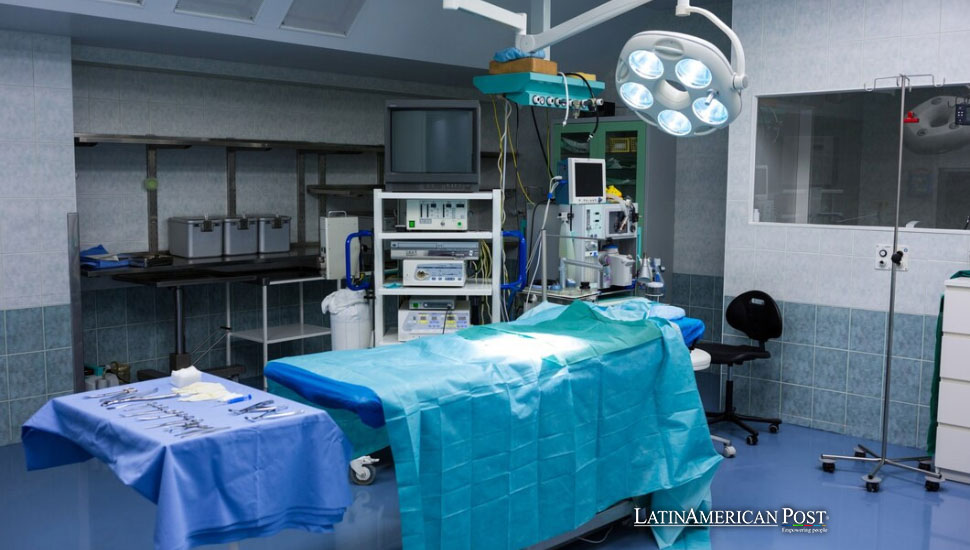Mexico’s Push to Revolutionize Its Medical Device Industry Economy

Mexico’s government has launched a significant initiative to strengthen its medical device industry by boosting national production and empowering small and medium enterprises (MiPymes). This strategic move aims to enhance the country’s economic competitiveness on the global stage.
The Mexican government, under the leadership of the Secretaría de Economía (SE), is making a concerted effort to transform the nation’s medical device industry. On Tuesday, the SE initiated a landmark meeting between large buyers and private suppliers to accelerate the development of this critical sector. The move is part of a broader strategy to increase the national export content and place micro, small, and medium-sized enterprises (MiPymes) at the forefront of the country’s economic priorities.
Raquel Buenrostro, the head of the SE, emphasized that the primary objective of this initiative is to bolster national production and integrate more local content into Mexico’s export products. “We are focusing on increasing national production and placing MiPymes at the center of our economic agenda,” Buenrostro stated. This approach is about enhancing output and reshaping the country’s industrial landscape to become more self-reliant and competitive.
The policy is a clear departure from previous economic models heavily relying on imports. Instead, Mexico is now focused on fostering local industries, particularly in strategic sectors such as medical devices, semiconductor chips, and electric and electronic goods. This shift is expected to reduce dependency on foreign products, develop the domestic market, and position Mexico as a more competitive player in the global economy.
The ‘Mexican Moment’ in Global Context
Mexico’s renewed focus on industrial development comes when the global economic landscape shifts. The term ‘Mexican Moment’ has been used to describe the country’s current economic upswing, fueled by a combination of strategic policies and favorable global conditions. Buenrostro pointed out that Mexico’s industrial policy, which targets critical sectors like medical devices, is a crucial component of this economic momentum.
This moment is also closely tied to nearshoring, where companies relocate their operations closer to their primary markets. Mexico has become an attractive destination for such investments, as evidenced by the 166 investment announcements made by foreign companies in the first seven months of 2024 alone. These estimated $48.035 billion investments testify to the country’s growing appeal as a manufacturing hub.
The medical device sector, in particular, has seen substantial growth. With over 40 manufacturing plants operating nationwide, the industry grew by 9.5% in 2023, driven by $300 million in investments. This growth has also contributed to significant job creation, with 175,000 jobs added in 2023 and the first quarter of 2024. Mexico’s exports in this sector have positioned the country as the fourth-largest exporter of medical devices globally and the top supplier to the United States, its principal trading partner.
Enhancing Competitiveness Through Collaboration
One of the cornerstones of Mexico’s industrial policy is collaboration. The government is working closely with various stakeholders, including industry leaders, academia, and other government entities, to ensure the successful implementation of this initiative. Othón Valverde, the SE’s Undersecretary of Industry and Commerce, highlighted that this policy includes various components designed to foster industrial growth, such as fiscal incentives, industrial promotion programs, and the provision of essential services and infrastructure.
Key infrastructure projects, such as the Interoceanic Corridor and the Tren Maya, are supporting these efforts and are expected to play vital roles in enhancing the country’s logistical capabilities. The Sonora energy plan is another significant initiative to boost the country’s energy infrastructure to support industrial growth.
The emphasis on collaboration is also evident in the government’s commitment to the ‘triple helix’ model, which involves coordinated efforts between government, industry, and academia. This model is designed to create synergies that drive innovation and competitiveness across the sector. Valverde noted that this approach would help integrate MiPymes into global supply chains, allowing them to contribute more effectively to Mexico’s economic growth.
Maximo Vedoya, leader of the Cámara de la Industria de Transformación de Nuevo León (Caintra), praised the government’s approach, highlighting the importance of adding value within Mexico. He noted that increasing the value added by Mexican industries would strengthen North America as a competitive region and enable MiPymes to play a more significant role in the economy. Vedoya described this as a ‘quantum leap’ for Mexico, benefiting businesses, communities, and the wider population.
The Broader Impact on Health and Economy
The implications of Mexico’s push to develop its medical device industry extend beyond economic growth. Guillermo Murra, Executive Director of GE HealthCare Mexico, underscored this initiative’s positive effects on the country’s healthcare sector. By strengthening local supply chains and manufacturing capabilities, Mexico is poised to improve its healthcare infrastructure, ensuring better access to medical devices and technologies critical for patient care.
“This story of supply chains and manufacturing is the beginning of a patient’s journey to recovery or improved quality of life,” Murra stated, emphasizing the broader social impact of this economic initiative. The focus on healthcare aligns with the government’s strategic priorities and reflects a commitment to improving the quality of life for its citizens.
Moreover, the growth of the medical device industry is expected to create high-quality jobs and foster innovation, further boosting the country’s economic resilience. By investing in sectors that have both financial and social significance, Mexico is not only enhancing its global competitiveness but also laying the foundation for a more inclusive and sustainable development model.
Also read: Mexico’s Agricultural and Fisheries Growth Defies Drought and Global Challenges
Mexico’s ambitious initiative to boost its medical device industry clearly demonstrates the government’s commitment to fostering economic growth through strategic industrial policies. By prioritizing national production, supporting MiPymes, and encouraging collaboration across sectors, Mexico is positioning itself as a leader in the global economy. The impact of this initiative will be felt across the country, from the boardrooms of major corporations to the communities that stand to benefit from improved healthcare and job creation. As Mexico continues to capitalize on its ‘Mexican Moment,’ the future looks bright for its medical device industry and the broader economy.




